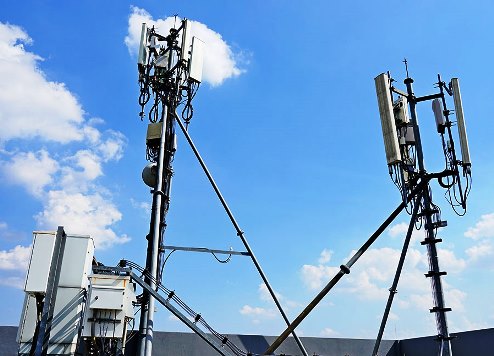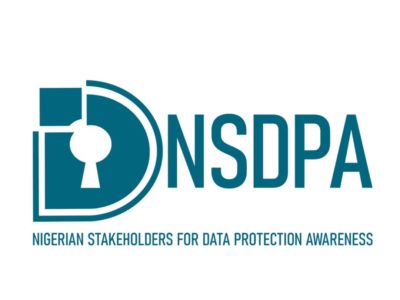Over the past few years, OpenRAN has received a lot of media attention. The solution was first marketed as an alternative to Chinese suppliers such as Huawei and ZTE and subsequently, as a way to rollout 5G faster and cheaper. If you believe those who market OpenRAN, then the world’s mobile operators should be lining up to buy it. However the reality is that OpenRAN is a commercial catastrophe. It’s something that everybody talks about, but nobody buys.
RELATED: Facts Check: Is OpenRAN an alternative for emerging markets in Africa, Latin America and Asia?
Strand Consult has nothing against OpenRAN. However we want to create the transparency at the O-RAN Alliance, and some of its members have pushed back against. Indeed Strand Consult’s transparency concerns are shared by policymakers in the EU and US, notably the House of Representatives Foreign Affairs Committee. Strand Consult is an independent research company with 25 years industry experience in the mobile telecom industry with over 170 mobile operators globally as clients. Strand Consult is known for its expert knowledge and many reports which help mobile operators, and their shareholders navigate an increasing complex world and to debunk mobile industry hype.
In this note, we will look at OpenRAN and the sad facts that have afflicted these actors. A few weeks ago, one of the high-profile companies in the OpenRAN space, Parallel Wireless, laid off more than half of its employees. It came just months after the same company said it would double the number of employees by the end of 2022.
The reason for the scale-down, according to Parallel Wireless, is that the market is developing more slowly than expected and that OpenRAN is starting to look like a marathon, not a sprint. It’s probably not the best analogy because Huawei used it just a few years ago.
There are three options in this situation. A. Downsize; B. Close the company; or C. Raise more money. It appears that Parallel Wireless chose option A, laying off 50-70 percent of the company. In practice, large employment cuts can drain the brain power of the organization and negatively impact the company in the medium and long term. Alternatively, the company could close. Finally, the shareholder could raise more money if they believed the upside was worthwhile.
Shareholders at Parallel Wireless probably came to the conclusion that it will be difficult to deliver the OpenRAN success story. Indeed they may be looking for a buyer to recover some, if any, of their investment in the company.
Last week, Tecknexus published an overview of global OpenRAN deployments and trials as of June 2022. This mapping sheds light on the Parallel Wireless challenge. It seems that many mobile operators have tested the equipment, but few, if any, have chosen to buy.
Strand Consult has published many OpenRAN reports and research notes. Here are some of our key findings on the role of OpenRAN in competitive world.
Facts Check: Is OpenRAN an alternative for emerging markets in Africa, Latin America and Asia?
Much of Africa, Latin America and Asia are still 2G/3G markets. Hundreds of millions of people today and in the future will still use phones that only support 2G and 3G. In fact, the most widely used network technologies in Africa and Latin America today are 2G and 3G. Many emerging countries are behind to roll out 4G. This is not to say that operators in Africa and Latin America are not innovative to add 4G coverage on cell sites and base stations that support 2G/3G they try to innovate and upgrade as much as possible. However, mobile operators face certain limitations as much as they try to economize. While policymakers may want ubiquitous 5G, it is still a challenge to roll it out in many countries, to say nothing of the requirements of end users demand for 5G devices and services as a driver of the technology.
OpenRAN and O-RAN require 4G/5G technologies. They are not substitutes for 2G/3G, nor shortcuts to 4G/5G. Next generation networks still require the installation of regular RAN technologies before any OpenRAN technologies can be used. Simply put, OpenRAN does not offer 1:1 replacement for existing networks in Africa, Latin America, and Asia. This means OpenRAN is not a plug and play solution for low-income subscribers in emerging markets. Read more.
5G cybersecurity has never been more important. Strand Consult´s review of EU OpenRAN Report
Last week the European Commission published the report Cybersecurity of Open Radio Access Networks which analyses the cybersecurity implications of Open Radio Access Networks (RAN). It includes background on the technology, an assessment of security risks, and guidance for implementation. The report is significant as it represents perhaps the only official government assessment of OpenRAN.
While the governments of US, United Kingdom, India and Japan promote OpenRAN, they have not yet published any official, authoritative security studies on the technology. The European Union report was developed by the Network and Information Systems (NIS) Cooperation Group which includes the security authorities of the 27 EU-member states and ENISA, the EU Agency for Cybersecurity.
The OpenRAN cybersecurity report is an appendix to and expansion of the EU tool box for 5G Security, the set of robust and comprehensive measures for a coordinated EU approach to 5G network security. The report is not a position paper which argues for or against a policy. Rather, it is practical, technical approach to ensure that OpenRAN aligns with the EU 5G 3GPP tool box.
In essence the new OpenRAN report performs a similar function to the “European New Car Assessment Programme” (Euro NCAP) the voluntary, non-profit car safety performance rating of 0-5 stars. Such methodologies help governments, firms, and consumers assess risk and perform mitigation. Together, the EU member state´s report on OpenRAN security and the tool box can create secure 5G network deployments. Read more.
OpenRAN at Mobile World Congress 2022 – a Review by John Strand
I have attended the Mobile World Conference (MWC) for almost 25 years, interrupted only in the last two by Covid-19. I have attended as the mobile generations have increased from 2G to 5G. Year after year, Strand Consult has provided pre and post reviews of the event. Here’s the archive.
Vendor diversity is the big thing right now, making oneself less dependent on countries like China and large suppliers. It is a complex debate. Given the supply shocks experienced from the Russian invasion of Ukraine, this is likely to accelerate supply chain diversification efforts vis-à-vis China. There wasn’t much focus on vendor diversity across the supply chain in Barcelona this year. What was most focused on was vendor diversity in relation to the RAN and that despite the RAN costs making up about 3% of the mobile operators’ ARPU.
GSMA worked at MWC hard to put focus on OpenRAN, but industry still grapples with the big challenge that OpenRAN is something operators test and talk about but not something operators buy. If you attended the OpenRAN events at MWC, it was “The Usual Suspects” who reused the arguments they have used for the past two years. We’re talking about people who referred to testing agreements with operators as commercial agreements. When you hear smaller players like Mavenir and Parallel Wireless, it is clear that they are panicking that they are not getting the orders that they have probably promised their boards. It is very easy to see through a salesperson who has difficulty achieving the sales results that are expected of him. Read more.
44 Chinese companies have joined the OpenRAN effort, a strategy to reduce Huawei’s presence in 5G
Mobile cellular networks are costly to build. In 2019, the world’s mobile operators earned just over $1 trillion and spent $30 billion on Radio Access Network (RAN) equipment, some 3 percent of revenue. To reduce cost, mobile operators leverage the pool of network equipment vendors, for example by developing new interfaces in network equipment to lower barriers to entry, under the industry term OpenRAN or Open Radio Access Network. OpenRAN is not a per se standard but a collection of technological features purported to allow different vendors to supply 5G networks with “standardized open interfaces” specified by the O-RAN ALLIANCE. Note that O-RAN only addresses internal RAN components. The industry still relies on 3GPP, the 3rd Generation Partnership Project, to build an end-to-end mobile cellular network and to connect end-user devices. OpenRAN has become a hot topic in tech policy as an antidote to Huawei equipment in mobile networks, but dozens of Chinese companies have joined the O-RAN ALLIANCE and are poised to drive OpenRAN standards and manufacturing.
As the unsavory practices and relationships between Huawei and the Chinese government have been revealed, many nation state leaders have demanded the removal of Huawei equipment from communications networks. Huawei itself has not succeeded to demonstrate that it is an employee- owned company free from Chinese government control. China’s practice of civil military fusion means that all economic inputs can be commandeered for military purposes. Its de facto information policy asserts sovereignty over the internet and can thus enjoin any Chinese firm or subject to participate in surveillance and espionage. This means that restricting Huawei alone is not sufficient to secure 5G; the presence of any Chinese product in the network poses a security risk. Now that the Huawei brand name is toxic, many non-Chinese firms see an opportunity to enter the 5G network equipment market, but it is not clear whether and to what degree they will use Chinese standards, components, and manufacturing.
The O-RAN ALLIANCE was established in 2018 by Deutsche Telekom, NTT DOCOMO, Orange, AT&T, and China Mobile and has grown to 237 mobile operators and network equipment providers. The US has 82 members; China, 44 (3 from Hong Kong); Taiwan, 20; Japan, 14; United Kingdom, 10; India, 10; and Germany, 7. Notably the 44 Chinese member companies exert significant control on the technical specifications and supply chain of OpenRAN 5G products and services. The conundrum of engagement with restricted Chinese entities does not end there. Citing security concerns, the Federal Communications Commission rejected a US operating license to China Mobile and may revoke approvals for China Telecom for its failure to demonstrate that it is not influenced the Chinese government. Other O-RAN ALLIANCE members include Inspur, Lenovo, Tsinghua, and ZTE, companies the US government restricts for security reasons given their ties to the Chinese government and/or military. The O-RAN ALLIANCE did not return a request for comment. Read more.
After some years, OpenRAN has yet to notch a major commercial success. If OpenRAN gets the growth its proponents predict, it will account for less than 1 percent of the 5G mobile sites in 2025; not more than 3 percent in 2030 (install base). It looks like OpenRAN is too little, too late to make a difference in a world in which operators deploy 10,000 classic 5G sites every month. Note that the RAN cost of an average mobile operator is equivalent to about 3% of their ARPU. In practice, this means that if a US operator passed on all OpenRAN savings to customers, the average subscriber would save 40 cents per month.
In the report ”Debunking 25 Myths of OpenRAN” Strand Consult provided with the objectivity and transparency needed by decision makers. This is the sort of information and analysis which is not available in most mainstream outlets. At the end of the day, mobile operators’ job is to deliver a great network experience to their customers. OpenRAN proponents have not succeeded to communicate, let alone demonstrate, specifically or empirically the difference they will make to mobile operators’ bottom line in a world in which 200 commercial 5G networks on classic RAN have been launched.
Last month Strand Consult released the report “OpenRAN and Security: A Literature Review”. While OpenRAN has received significant press and policy attention, there is relatively little scientific, empirical, and academic analysis of the Security topic. Strand Consult reviews the literature that does exist which includes academic papers by German and Taiwanese engineers, an official technical security review by European authorities, and some white papers and blogs by OpenRAN trade associations.
For more than 25 years, Strand Consult has debunked the many myths of mobile industry hype. Strand Consult’s goal is to create objectivity and transparency about the actors promoting OpenRAN so that mobile operators, investors, and other stakeholders can make informed decisions. See Strand Consult’s OpenRAN library with dozens of reports and research notes.
Original ttle by Strand Consult report: ‘You ain’t seen nothing yet II – Everyone talks about OpenRAN, but no one buys it.’
































